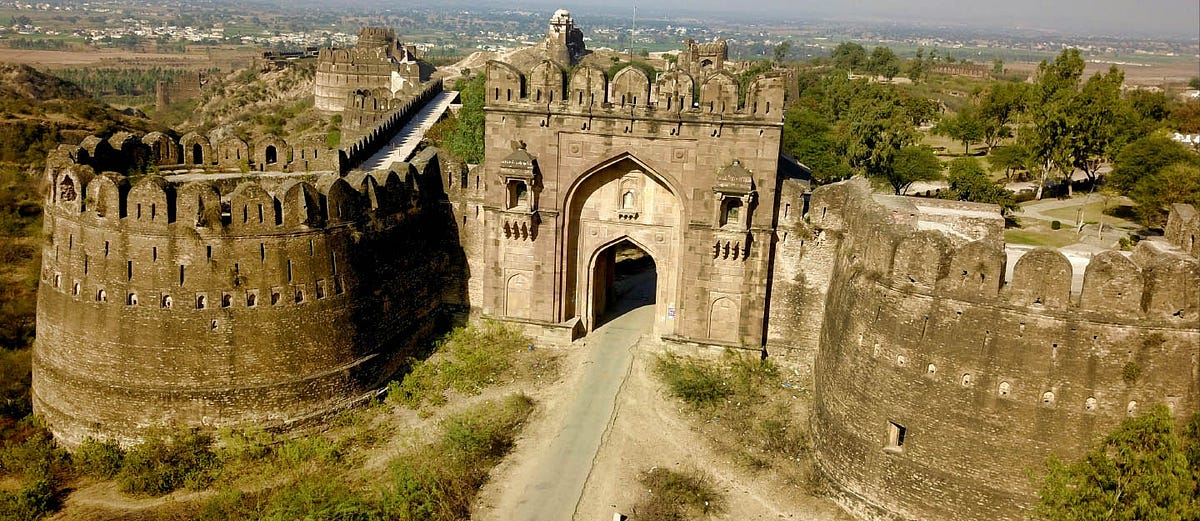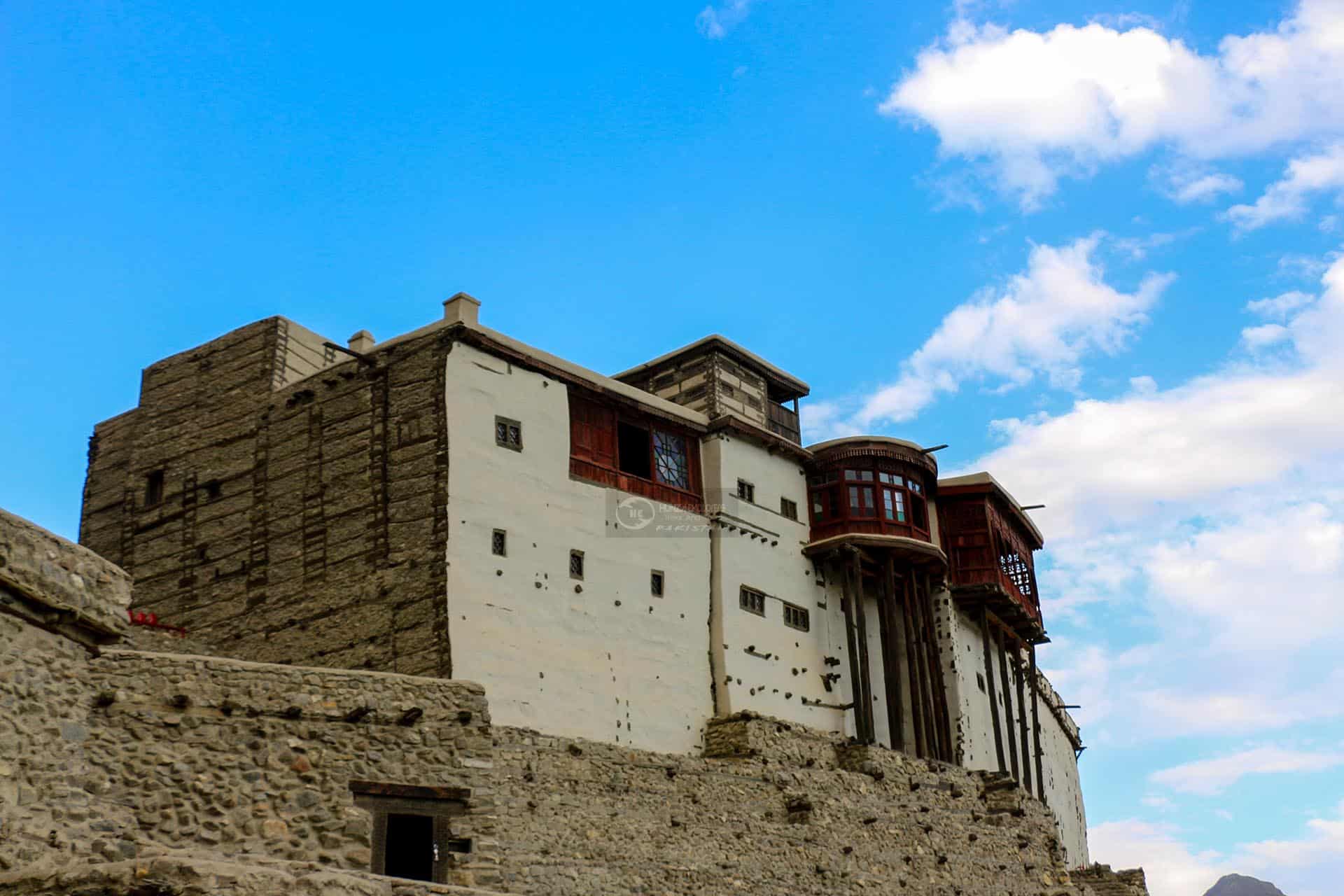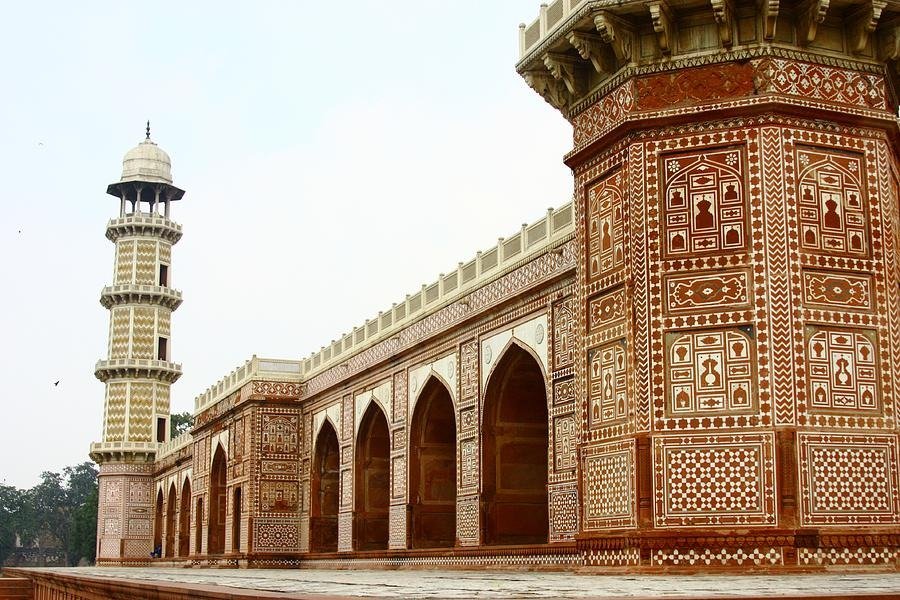Introduction to Jharbhoomi
Jharbhoomi, a term deeply rooted in the cultural and historical tapestry of India, refers to the land characterized by its unique geographical attributes and rich heritage. Nestled in the eastern region of India, Jharbhoomi is primarily associated with the state of Jharkhand, known for its diverse landscapes ranging from majestic hills to sprawling forests. The geographical location of Jharbhoomi serves as a crucial junction, blending the natural beauty of the land with a vibrant cultural milieu.
The cultural significance of Jharbhoomi is remarkable, yielding a treasure trove of traditions, practices, and folk arts that reflect the lives of its inhabitants. The state boasts a plethora of tribal communities, each with distinct languages, customs, and rituals that contribute to a multifaceted cultural identity. These communities have maintained their age-old traditions while adapting to modern influences, creating a dynamic cultural landscape that is emblematic of the resilience and diversity of the region.
In terms of historical context, Jharbhoomi has been a witness to various dynasties and civilizations that have left an indelible mark on the area. From the ancient Munda and Santhal tribes to the later influx of various rulers, the impact of historical events is palpable across its cities, monuments, and archaeological sites. These remnants not only narrate tales of the past but also play a crucial role in shaping the present identity of the inhabitants.
As we delve deeper into the exploration of Jharbhoomi, it becomes apparent that this region is not merely defined by its geographical characteristics, but is also an embodiment of cultural heritage and historical narratives that have significantly influenced local identity and pride.
The Historical Significance of Jharbhoomi

Jharbhoomi is a region steeped in rich history, serving as a crossroads of various cultures and events throughout the centuries. Its significance can be traced back to ancient times, where it played a pivotal role in the socio-political landscape of the area, influencing both local and regional affairs. The historical legacy of Jharbhoomi is characterized by a series of notable milestones that have shaped its identity.
One of the defining periods in Jharbhoomi’s history is the era of imperial expansion, where numerous dynasties sought control over this fertile land. The strategic location of Jharbhoomi often made it a target for various rulers, leading to a conflux of cultures as each dynasty left its mark. Historical records illustrate how these interactions contributed to a unique synthesis of traditions that characterize the region today.
Additionally, key figures emerged from Jharbhoomi who played crucial roles in the social and political dynamics of the area. These individuals, ranging from local chieftains to celebrated leaders, influenced not only Jharbhoomi but also the neighboring territories. Their legacies, immortalized in folklore and historical texts, continue to resonate within the community, providing a deep connection to the past.
The impact of historical events extends to shaping the cultural landscape of Jharbhoomi. Festivities, rituals, and local customs often reflect the historical narratives that have been passed down through generations. This intertwined history contributes to a rich tapestry where every celebration, monument, and market tells a story of resilience and continuity.
In conclusion, understanding the historical significance of Jharbhoomi is crucial for appreciating its current cultural dynamics. Recognizing the transformative events and remarkable figures within its history allows for a deeper connection to this unique region, further establishing Jharbhoomi as a cultural and historical treasure in the contemporary narrative of India.
Cultural Aspects of Jharbhoomi

The region of Jharbhoomi is a vibrant tapestry of cultural practices that reflect its diverse heritage and the rich history of its communities. Traditional festivals play a crucial role in the cultural landscape, with numerous events celebrated throughout the year. One of the most significant festivals is the Chhath Puja, which honors the sun god and is marked by intricate rituals that take place along rivers and water bodies. The festival attracts a multitude of devotees and serves as an important occasion for social gatherings, emphasizing the unity and collective spirit of the community.
Art forms in Jharbhoomi are equally noteworthy, encompassing a range of traditional crafts and performing arts that have been passed down through generations. Local artisans create intricate handwoven textiles, pottery, and wooden crafts that reflect the region’s heritage. The folk dances and music of Jharbhoomi, such as the vibrant and energetic Suwa dance, are performed during festivals and other celebratory occasions, showcasing the artistic talents of the local populace. These art forms not only serve as entertainment but also as a means of storytelling and preserving cultural narratives.
The culinary scene in Jharbhoomi is another essential aspect of its cultural identity. The local cuisine is characterized by an array of flavors and ingredients native to the region. Staple dishes often include rice, lentils, and a variety of seasonal vegetables. Special occasions and festivals see the preparation of traditional sweets and delicacies, such as the infamous Thekua, which holds significant cultural symbolism. Food in Jharbhoomi is not merely sustenance; it is a medium through which traditions are celebrated and shared among families and friends.
Overall, the cultural practices found in Jharbhoomi are a testament to the community’s rich heritage and resilience. Through festivals, art, and cuisine, the spirit of Jharbhoomi thrives, offering a glimpse into the region’s profound connection to its past and a vibrant representation of its present.
Natural Attractions in Jharbhoomi

Jharbhoomi is renowned for its stunning natural attractions that contribute significantly to its cultural and historical allure. Nestled among picturesque landscapes, Jharbhoomi boasts a diverse array of flora and fauna that captivates visitors and locals alike. The region’s verdant hills, sprawling forests, and pristine water bodies create a scenic backdrop, making it an ideal destination for nature enthusiasts and eco-tourists.
The abundance of greenery in Jharbhoomi fosters a rich ecosystem, home to a variety of plant species, many of which hold medicinal properties and are integral to local traditions. The forests are abundant with wildlife, offering opportunities for observing native species in their natural habitats. Birdwatchers, in particular, can find a plethora of avian diversity, with both migratory and resident birds frequenting the area.
Eco-tourism plays a pivotal role in the community’s lifestyle, as initiatives aimed at sustainable tourism help preserve the natural environment while providing economic benefits to local residents. Guided nature walks and wildlife tours allow visitors to engage with the unspoiled beauty of Jharbhoomi while fostering a sense of responsibility towards environmental conservation. These activities not only enhance awareness about the region’s ecological significance but also promote the preservation of local traditions that are intricately linked to the land.
The natural attractions surrounding Jharbhoomi are not just visually stunning; they are integral to the social fabric and cultural practices of its inhabitants. Emphasizing sustainability and conservation, the community often incorporates natural resources into their daily lives, from traditional medicine to craft-making. The harmonious relationship between the residents and their environment is a testament to Jharbhoomi’s commitment to preserving its rich historical and cultural heritage, further solidifying its status as a treasured destination.
Folk Tales and Legends of Jharbhoomi

The cultural landscape of Jharbhoomi is adorned with a multitude of folk tales and legends that have been passed down through generations. These narratives not only serve as entertainment but also encapsulate the values, beliefs, and imagination of the local populace. Each story in Jharbhoomi carries a lesson, often interweaving elements of morality and human experience, which reflect the societal norms of the time. The rich tapestry of folklore is a testament to the area’s vibrant cultural heritage.
One of the most celebrated tales is that of the legendary hero, “Bhagwan Singh,” who represents bravery and righteousness. According to local legend, he defended the land of Jharbhoomi against tyrannical forces, ensuring peace and prosperity for its inhabitants. His narrative is not only a source of inspiration but also instills a sense of pride among the local communities. Villagers frequently recount his exploits, emphasizing virtues such as courage, sacrifice, and love for one’s homeland.
Another captivating story features the mystical “Naga,” a serpent deity believed to inhabit the rivers of Jharbhoomi. This legend emphasizes the significance of nature and the aquatic ecosystems in local culture. Elders often tell tales of how the Naga protects the village and its water sources, reinforcing the sacred connection between the people of Jharbhoomi and their environment. Such narratives enhance the understanding of local customs while fostering a deep respect for the natural world.
Unlike mere fables, these tales resonate with deeper meanings and are often used to teach younger generations about their cultural heritage. The folklore of Jharbhoomi collectively serves as a window into the community’s psyche, depicting aspirations, fears, and values that are quintessential to the identity of its people. As different stories intertwine, they paint a vivid portrait of a land rich in history and tradition, waiting to be explored.
Jharbhoomi’s Influence on Local Literature

Jharbhoomi is a region rich in cultural heritage and historical narratives that have significantly influenced local literature. Writers and poets from this area have drawn inspiration from the diverse landscapes, traditions, and historical events that define Jharbhoomi. The captivating topography of the region, characterized by its scenic beauty and vibrant folklore, acts as a muse for many literary works. This has cultivated a unique literary movement that celebrates the essence of Jharbhoomi through various artistic expressions.
Throughout the years, several prominent authors have emerged from Jharbhoomi, weaving tales that reflect the region’s rich cultural tapestry. Their works often explore themes such as identity, community, and the inevitable conflict between tradition and modernity. The influence of Jharbhoomi is evident in local poetry as well, where poets encapsulate emotions and experiences associated with their homeland. The rhythmic beauty of the local dialects enriches their verses, further connecting readers to the essence of Jharbhoomi.
Noteworthy literary movements have surfaced as a result of this cultural impact. For instance, regional literature has increasingly begun to challenge mainstream narratives, emphasizing indigenous voices that narrate their own histories and struggles. Such movements have seen various genres flourish, including folklore retellings, historical fiction, and modern interpretations of classic stories that reflect Jharbhoomi’s sociopolitical dynamics.
Prominent works inspired by the cultural backdrop of Jharbhoomi stand as testaments to its literary significance. By integrating local tales with broader themes, these authors not only document their homeland’s richness but also preserve its heritage for future generations. Consequently, the relationship between Jharbhoomi and its literature paints a vivid picture of a region that thrives on creativity and passion, capturing both the imagination and the heart of its audience.
Modern Challenges Facing Jharbhoomi

Jharbhoomi, a region steeped in rich cultural heritage and historical significance, is currently grappling with several modern challenges that threaten its unique identity. One of the most pressing issues is urbanization, which brings with it a wave of development projects designed to accommodate the growing population. While this transformation aims to boost economic growth and improve living standards, it often comes at the expense of the region’s traditional architecture and communal spaces, leading to a loss of historical character.
In addition to urbanization, environmental concerns are significant in Jharbhoomi. Rapid development often leads to deforestation, pollution, and strain on local water resources. The expansion of infrastructure can disrupt local ecosystems and diminish the natural beauty that has defined Jharbhoomi for centuries. This situation challenges residents and local authorities to implement sustainable practices that prioritize environmental protection while still enabling modernization. Addressing these challenges requires careful planning and a commitment to preserving the ecological balance.
Furthermore, the preservation of cultural heritage has become increasingly challenging in the face of globalization and homogenization. As the world becomes more interconnected, Jharbhoomi is at risk of losing its distinctive cultural traits, traditional practices, and local languages. This dilemma has prompted renewed efforts from both local communities and government bodies to promote cultural education and heritage conservation. Striking a balance between embracing modern influences and maintaining the unique aspects of Jharbhoomi’s identity is essential for the long-term vitality of the region.
Ultimately, finding a resolution to these modern challenges demands collaborative efforts from stakeholders, including residents, local governments, and cultural organizations. By recognizing the importance of both development and preservation, Jharbhoomi can navigate the complexities of the contemporary world while keeping its rich legacy alive.
Visiting Jharbhoomi: A Travel Guide

Jharbhoomi, renowned for its rich cultural heritage and captivating landscapes, is an increasingly popular destination among travelers. To make the most of your visit, understanding transportation options, accommodation choices, and essential local customs is vital.
Getting to Jharbhoomi can be accomplished via various means. The nearest major city typically serves as the primary entry point. From there, visitors can choose to travel by train, bus, or taxi. Train services offer a comfortable and scenic route, while local buses provide an economical option for budget-conscious travelers. For those seeking a more personalized experience, hiring a taxi is advisable, ensuring direct transport to your desired location in Jharbhoomi.
Accommodation in Jharbhoomi caters to a wide range of preferences and budgets. Tourists can choose from luxurious hotels, charming guesthouses, or more economical lodges. Booking in advance can be beneficial during peak travel seasons, as hotels may fill up quickly. Furthermore, for a more immersive experience, consider staying in homestays run by local families, providing an authentic glimpse into the everyday life within Jharbhoomi.
As you explore Jharbhoomi, several sites are paramount to include on your itinerary. The ancient temples, local markets showcasing traditional crafts, and serene natural surroundings are must-visit locations. Visitors should also be mindful of local customs, such as dress codes in religious sites and practices of respectful behavior towards residents. Learning a few basic phrases in the local language can also enhance interactions with residents, showcasing a respect for their culture.
With thoughtful planning and respect for the local way of life, your visit to Jharbhoomi is sure to be a memorable and enriching experience.
Conclusion: The Future of Jharbhoomi
The future of Jharbhoomi stands at a crucial juncture, where cultural heritage preservation and sustainable tourism can coexist harmoniously. As society evolves, the importance of safeguarding the rich traditions and historical significance of Jharbhoomi becomes increasingly apparent. There are numerous initiatives underway aimed at conserving the invaluable cultural resources that define this region. Local communities are taking an active role in these efforts, often initiating projects that promote traditional crafts, music, and folklore associated with Jharbhoomi. Such initiatives not only help preserve the heritage but also provide economic opportunities for residents, ensuring a sustainable future for the community.
Another aspect to consider is the potential for sustainable tourism in Jharbhoomi. By focusing on responsible tourism practices, stakeholders can draw visitors to the area without compromising its cultural integrity. Educating tourists about the local customs and traditions can foster a deeper understanding and appreciation for the region, resulting in a mutually beneficial relationship between visitors and the community. This approach enhances the traveler’s experience while ensuring that Jharbhoomi’s legacy is respected and maintained.
Moreover, the involvement of local government and non-governmental organizations in promoting Jharbhoomi is essential. Collaborative efforts aimed at developing infrastructure conducive to cultural tourism will facilitate greater access to this remarkable area. However, it is vital that these developments are carefully planned, prioritizing environmental and cultural sensitivity. Engaging local stakeholders in the planning process is key to creating initiatives that reflect Jharbhoomi’s unique character and respect its historical context.
Ultimately, as we look toward the future of Jharbhoomi, it is imperative for individuals—whether residents or enthusiasts of cultural history—to take an active role in supporting these preservation efforts. By participating in local initiatives, spreading awareness, and promoting responsible tourism, we can collectively ensure that Jharbhoomi continues to thrive as a cultural and historical treasure for generations to come.







